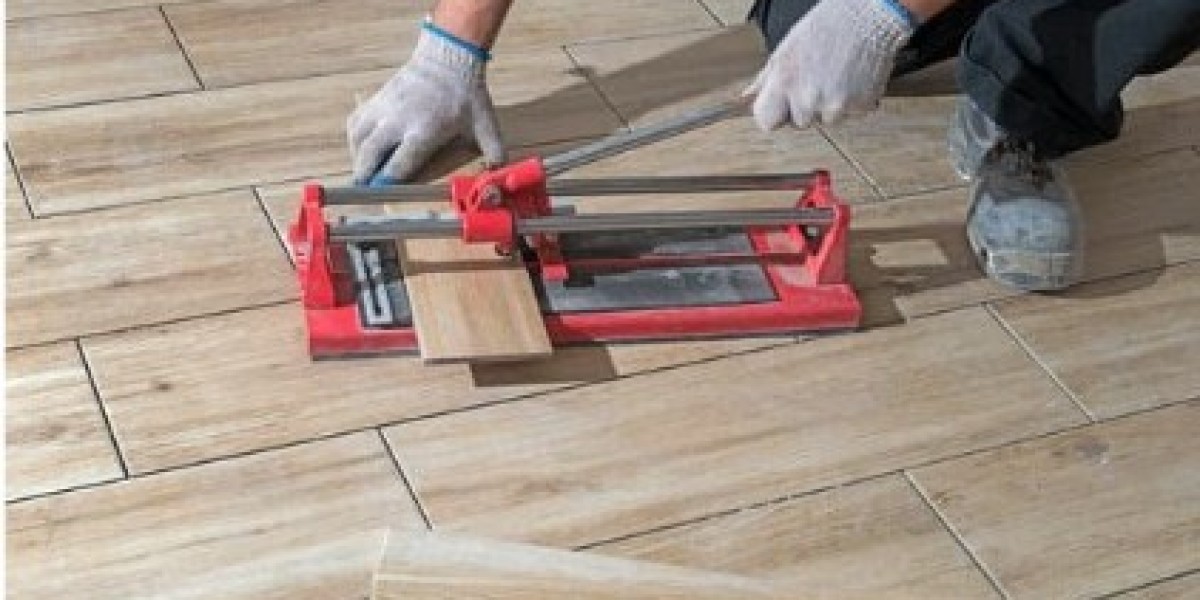1. Choosing the Wrong Tile Size
One of the most common mistakes homeowners make is selecting the wrong tile size for their space. Whether it’s too large or too small, choosing a tile size that doesn’t suit your room can create visual imbalances and make the area feel cramped or disjointed.
How to Avoid This Mistake:
Consider the Room’s Dimensions: For small rooms, opt for smaller tiles to avoid overwhelming the space. On the other hand, large tiles work well in open areas and can give a room a modern, seamless look.
Stick to Consistency: If your room has multiple sections or different spaces, try to keep the tile size consistent throughout to maintain a flow and harmony.
2. Neglecting to Test Tiles Before Installation
Some homeowners purchase tiles without thoroughly testing them in the room’s lighting. Tiles can look drastically different once they are laid down, and this can lead to a disappointing result if you’re not careful.
How to Avoid This Mistake:
Test Samples in the Actual Space: Before making your final decision, lay a few tiles in different parts of the room to see how they look in the room's natural light. This will give you a true sense of how the tiles will appear once installed.
Pay Attention to Lighting: Tiles may appear different under various lighting conditions. Be sure to check how the tiles look in the evening and during the day, as light affects how colors and patterns are perceived.
3. Not Paying Attention to Tile Durability
Tile durability is one of the most important factors to consider. Porcelain tiles are more durable than ceramic tiles, for example, and some types of tiles are more resistant to scratches, stains, and moisture than others. Not all tiles are created equal, so it’s crucial to understand their durability.
How to Avoid This Mistake:
Choose the Right Material for Your Space: If you’re installing tiles in high-traffic areas or places with high moisture exposure (like bathrooms or kitchens), make sure to choose durable and moisture-resistant options, such as porcelain or ceramic tiles.
Check the PEI Rating: The Porcelain Enamel Institute (PEI) rating system helps you assess a tile’s durability. A higher PEI rating indicates a stronger, more durable tile.
4. Ignoring Tile Grout Quality
Grout is often an afterthought when choosing tile, but it plays a significant role in the longevity and overall look of your floor. If you select poor-quality grout or the wrong type for your tile, you could face issues like cracking, discoloration, or water damage.
How to Avoid This Mistake:
Opt for High-Quality Grout: Use a grout that is specifically designed for the type of tile you’ve chosen. For example, epoxy grout is highly resistant to stains and water damage and is ideal for bathrooms and kitchens.
Consider Grout Color: The color of your grout can dramatically affect the appearance of your tile. Lighter grout can highlight the tile’s pattern and design, while darker grout can create a sleek, uniform look.
5. Failing to Properly Seal Natural Stone Tiles
Natural stone tiles, such as marble, slate, or travertine, are porous and can absorb water and stains. If they are not properly sealed, they can become damaged over time.
How to Avoid This Mistake:
Seal Your Natural Stone Tiles: Always apply a stone sealer to natural stone tiles before installation and periodically after that to protect the surface from moisture and stains.
Maintain Regular Sealing: Depending on the type of stone and the area it’s installed in, you may need to reseal your tiles every 1-3 years to keep them looking pristine.
6. Skipping Professional Installation
Many homeowners attempt to cut costs by installing tile flooring themselves. While DIY installations can be fun, incorrect tile installation can lead to uneven floors, cracked tiles, or shifting tiles that create long-term issues.
How to Avoid This Mistake:
Hire a Professional Installer: To ensure that your tiles are properly laid, hire a professional with experience in tile installation. This will guarantee that your tiles are perfectly aligned and securely placed, preventing problems later on.
Plan for Proper Expansion Gaps: Expansion gaps are critical in tile flooring to account for temperature changes. A professional installer will make sure these gaps are properly incorporated.
7. Not Considering the Maintenance Needs
Different tiles have different maintenance needs. Some require more frequent cleaning or special products, while others are more low-maintenance. Failing to consider how much upkeep your tiles will require can lead to frustration later on.
How to Avoid This Mistake:
Research Tile Maintenance: Before choosing your tiles, look into the cleaning and maintenance requirements. For example, porcelain tiles are relatively easy to maintain, while natural stones like marble may need specialized cleaners to prevent etching.
Plan for Regular Care: Incorporate cleaning into your regular routine to extend the life of your tiles. Invest in quality cleaning products that are designed specifically for the type of tile you’ve chosen.
Conclusion: Avoid Regret with Smart Tile Flooring Choices
Installing tile flooring can be a fantastic investment for your home, adding value, beauty, and functionality. However, making the right choices along the way is essential to avoid costly mistakes that could leave you regretting your decision. By considering factors like tile size, material durability, proper installation, and maintenance, you can ensure that your tile flooring remains beautiful and functional for years to come. Whether you're updating your kitchen, bathroom, or living space, always take the time to research and plan to avoid these common pitfalls and make your tile flooring experience a success! For expert advice and quality tile installation services, visit Salem Tile Setters.








